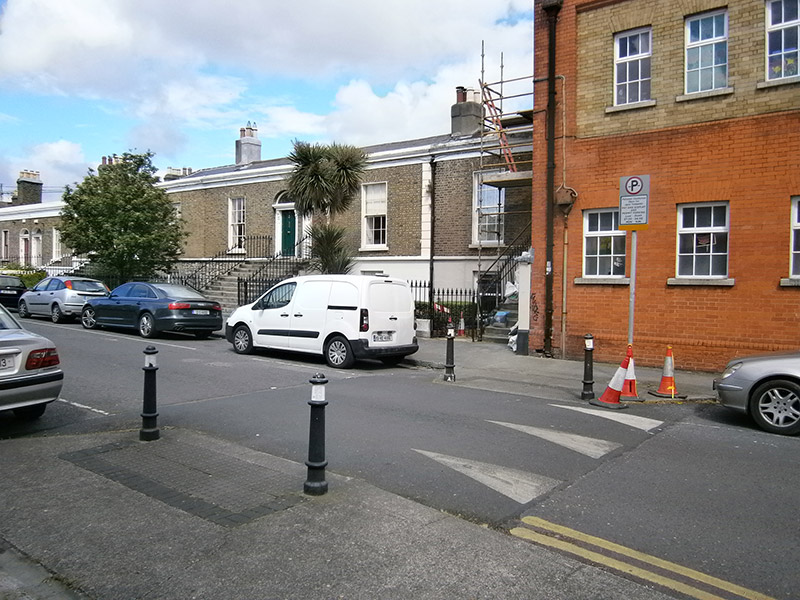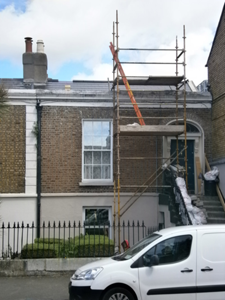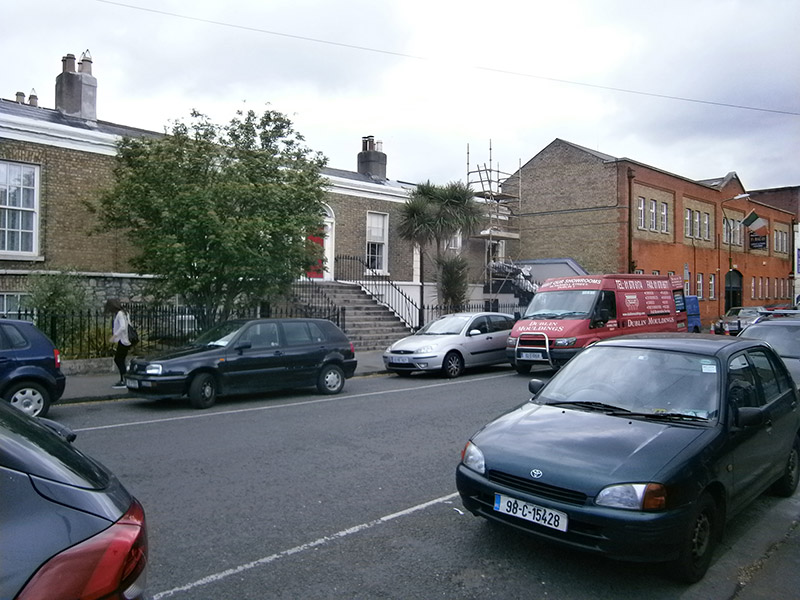Survey Data
Reg No
50110299
Rating
Regional
Categories of Special Interest
Architectural, Artistic
Original Use
House
In Use As
House
Date
1850 - 1860
Coordinates
315477, 233064
Date Recorded
16/05/2017
Date Updated
--/--/--
Description
Terraced two-bay single-storey over raised basement house, built c. 1855. M-profile pitched slate roof having rendered chimneystack with clay pots, partly hidden behind rendered parapet with moulded cornice. Cast-iron rainwater goods. Red brick, laid in Flemish bond, to walls, having cut granite plinth course over rendered wall to basement. Square-headed window openings with granite sills, raised render reveals, mixed six-over-six pane timber sliding sash and replacement windows. Elliptical-headed door opening having moulded render surround, timber doorcase comprising panelled pilasters and foliate console brackets supporting stepped cornice. Timber panelled door and teardrop fanlight. Granite steps with cast-iron coal-hole cover to wide eighth step. Basement area bounded by cut granite plinth wall surmounted by wrought-iron railings having decorative cast-iron collars and finials. Recent gate. Square-headed door opening to basement, beneath entrance steps. Set back from north side of road with basement-level front garden.
Appraisal
This house retains its traditional facade composition and features, including its door surround and ironmongery, which are characteristic of its mid-nineteenth century date. The shared scale and proportions of these small genteel townhouses contribute to the unified residential character of the area. The streetscape is further enhanced by the retention of elegant iron railings. Pleasants Street forms part of an early Victorian neighbourhood located to the west of Camden Street. The street is named after the philanthropist Thomas Pleasants (1729-1818) who donated money towards the establishment of the nearby Meath Hospital. This house was built during a later phase of development of the street likely after the economic recession of the late 1840s/early 1850s. The buildings along this side of the street were historically called Bell Villa, as inscribed on the plaque on the facade of No. 1, with a carved hand pointing in an easterly direction towards the rest of the group.





